Semantic Metadata Management for Water Treatment Systems
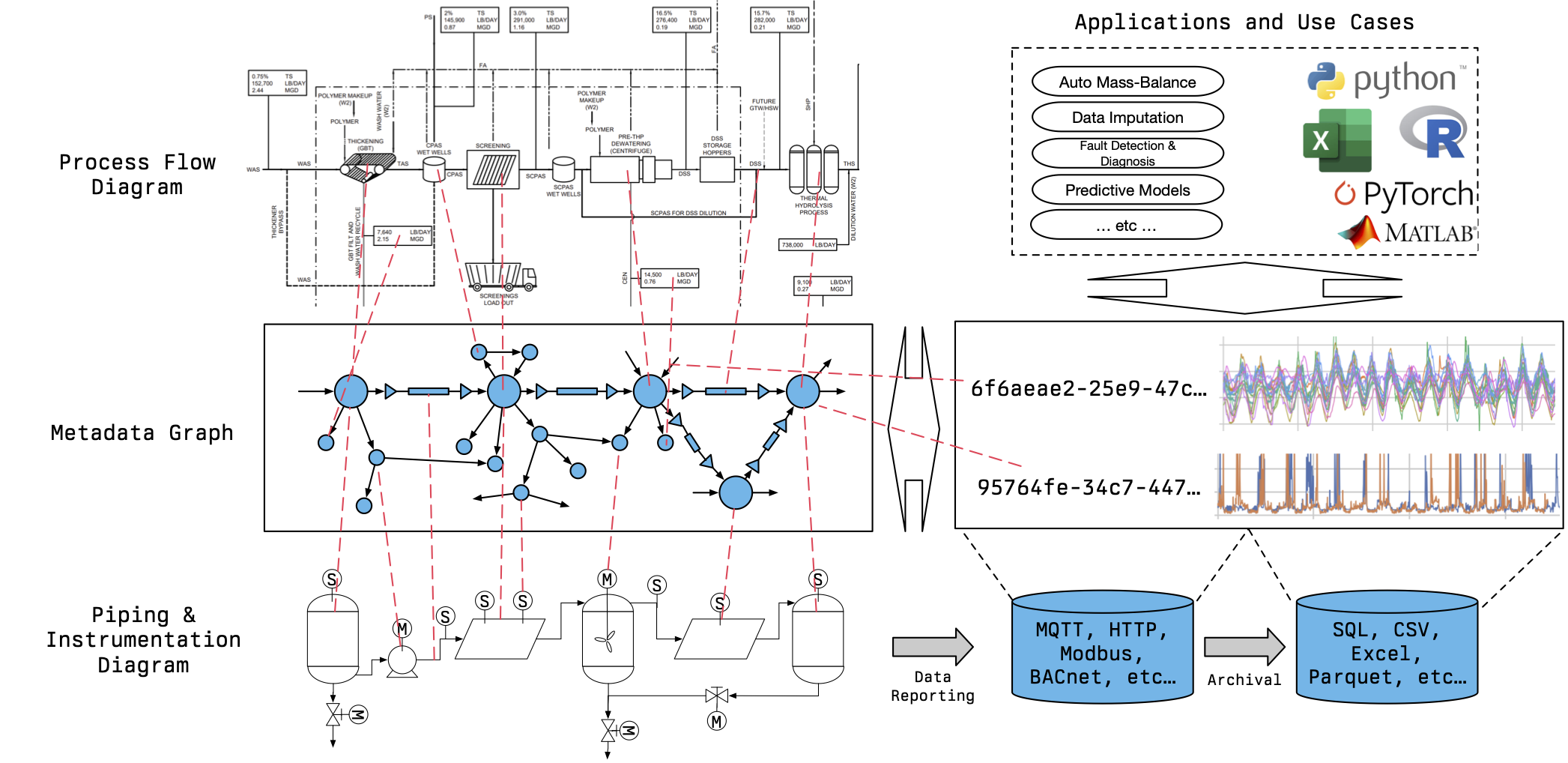
- Enhancing Data-Driven Science for Water Treatment Pilot Systems with Semantic Metadata Management
- funded by the National Alliance for Water Innovation (NAWI), funded by the U.S. Department of Energy, Office of Energy Efficiency and Renewable Energy (EERE), Industrial Efficiency and Decarbonization Office, under Funding Opportunity Announcement DE-FOA-0001905
- collaboration between Mines, NREL, and Stanford University
- This two-year project aims to develop a standard graph-based metadata ontology for water treatment pilot systems to address the challenges of fragmented, unlinked information across multiple formats. The proposed metadata framework will integrate critical information from process flow diagrams, instrumentation diagrams, and data historians into standardized knowledge graphs based on a new water treatment ontology. By standardizing the organization of critical information about treatment components like sensors, motors, and tanks, the project addresses current challenges posed by unstandardized and ad-hoc data organization schemes. Near-term benefits include built-in mass balance calculations for sensor drift detection, improved data preprocessing pipelines, and streamlined integration between control systems and data historians for modeling applications. This effort will enable more efficient reasoning about system behavior, ultimately supporting advanced analytics and modeling in water treatment operations. The project involves collaboration with water treatment system operators to ensure the project meets practical needs while laying groundwork for future developments like cross-facility model compatibility and seamless integration with various modeling tools.
BuildingMOTIF
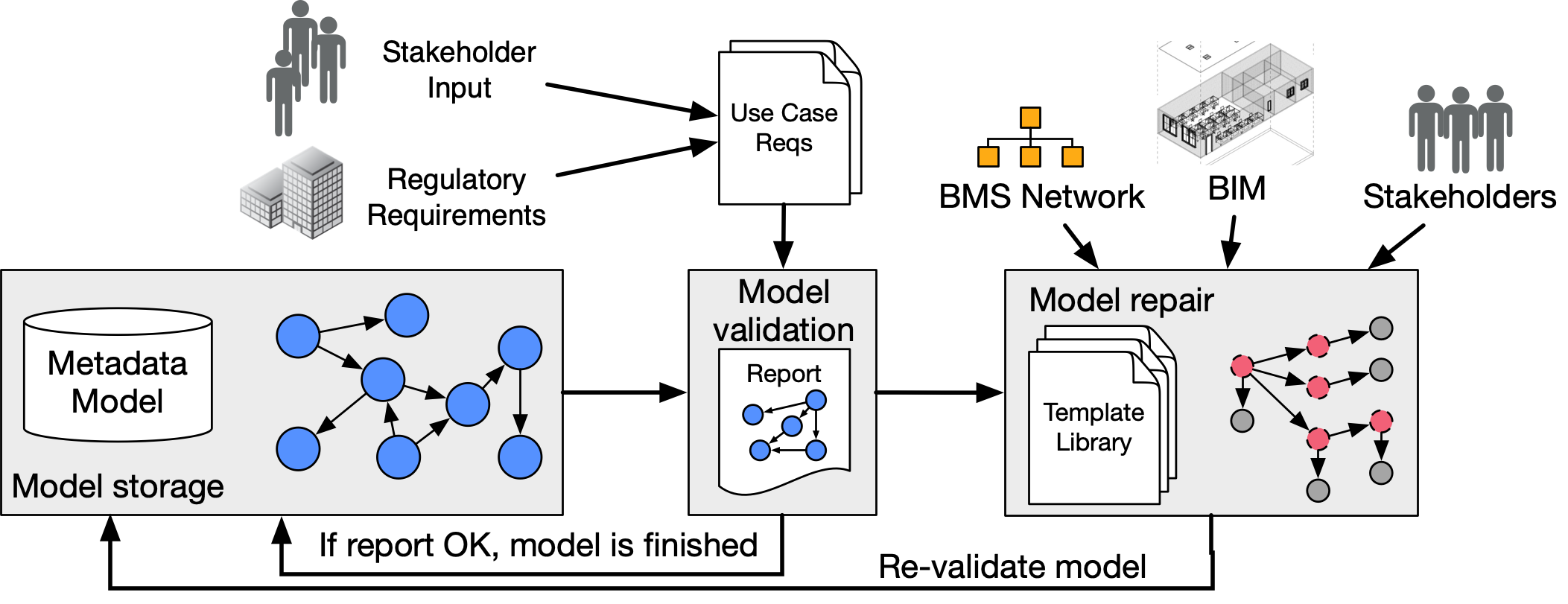
BuildingMOTIF is an open-source SDK for (1) verifying the compliance and validity of RDF models using ontologies like Brick, RealEstateCore, and ASHRAE 223; and (2) automating the creation of RDF models through incorporating application requirements into the authoring process.
Papers: BuildSys 2022
Brick
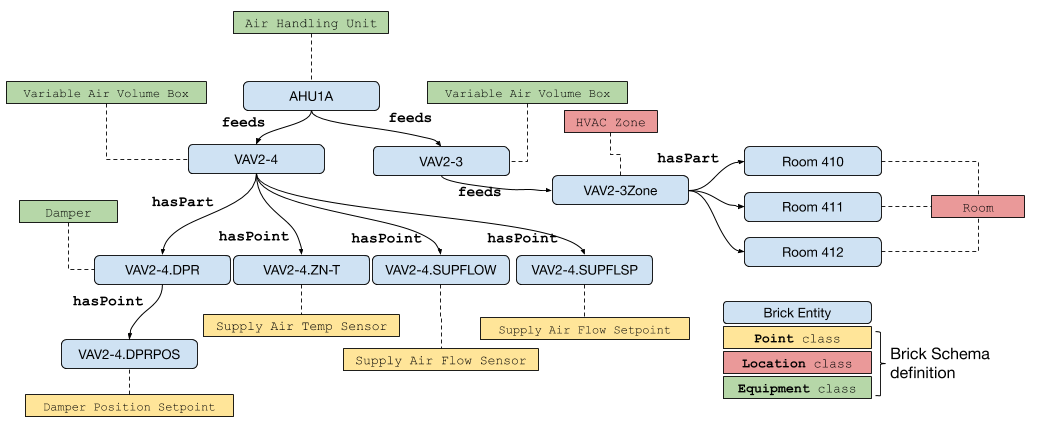
Brick is an open-source ontology which describes, defines and contextualizes data sources in and around buildings. Brick standardizes semantic description of physical, virtual and logical entities and assets and the relationships between them. Brick facilitates the implementation of self-adapting data-driven software — software which can configure itself to operate in a particular setting — by enabling that software to query its environment and discover relevant data sources.
Papers: BuildSys 2016 | Applied Energy 2018 | BuildSys 2019 | Frontiers 2020
Mortar
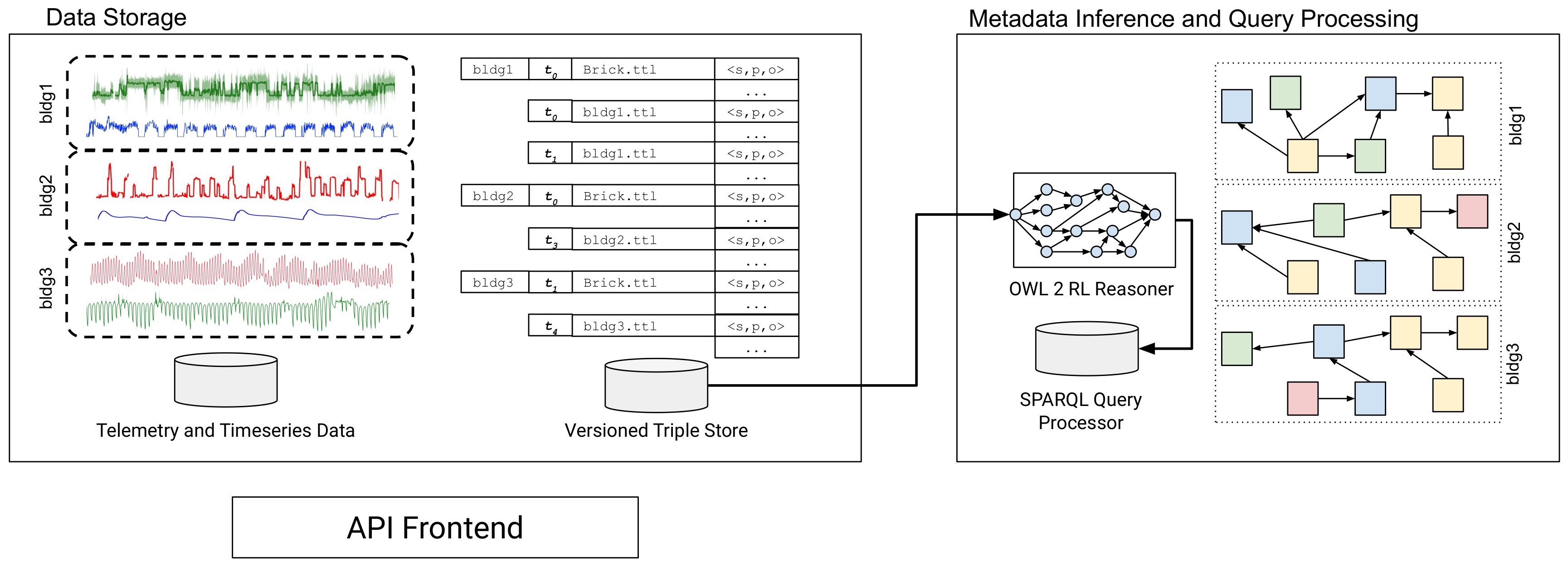
Note: the Mortar dataset is now available on HuggingFace under two datasets:
Mortar is an open platform for developing robust, reproducible building analytics against an open testbed of over 100 real buildings, each described with a Brick model. Mortar implements a declarative API enabling self-adapting analytics which can be written once and deployed over 10s or 100s of sites without changing a line of code or configuration. Mortar supports a library of open analytics implementations which demonstrate how Brick metadata can be used to author building analytics.
Papers: BuildSys 2018 | TOSN 2020
RDF and Semantic Web Tooling
I maintain a variety of semantic web tooling that strives to make ontology development and management easier, faster and more intuitive. These tools include:
- ontoenv: a command-line utility and Python library for managing
owl:importsstatements andowl:Ontologydefinitions - reasonable: a decently fast OWL2 RL reasoner, written in Rust, with Python bindings; the design of
reasonableis described in Chapter 7 of my dissertation - brickschema: a Python library, built on RDFlib, which facilitates querying, management, inference of Brick models
- WebSPARQL: an online SPARQL query processor and result visualizer (Online Demo)
eXtensible Building Operating System
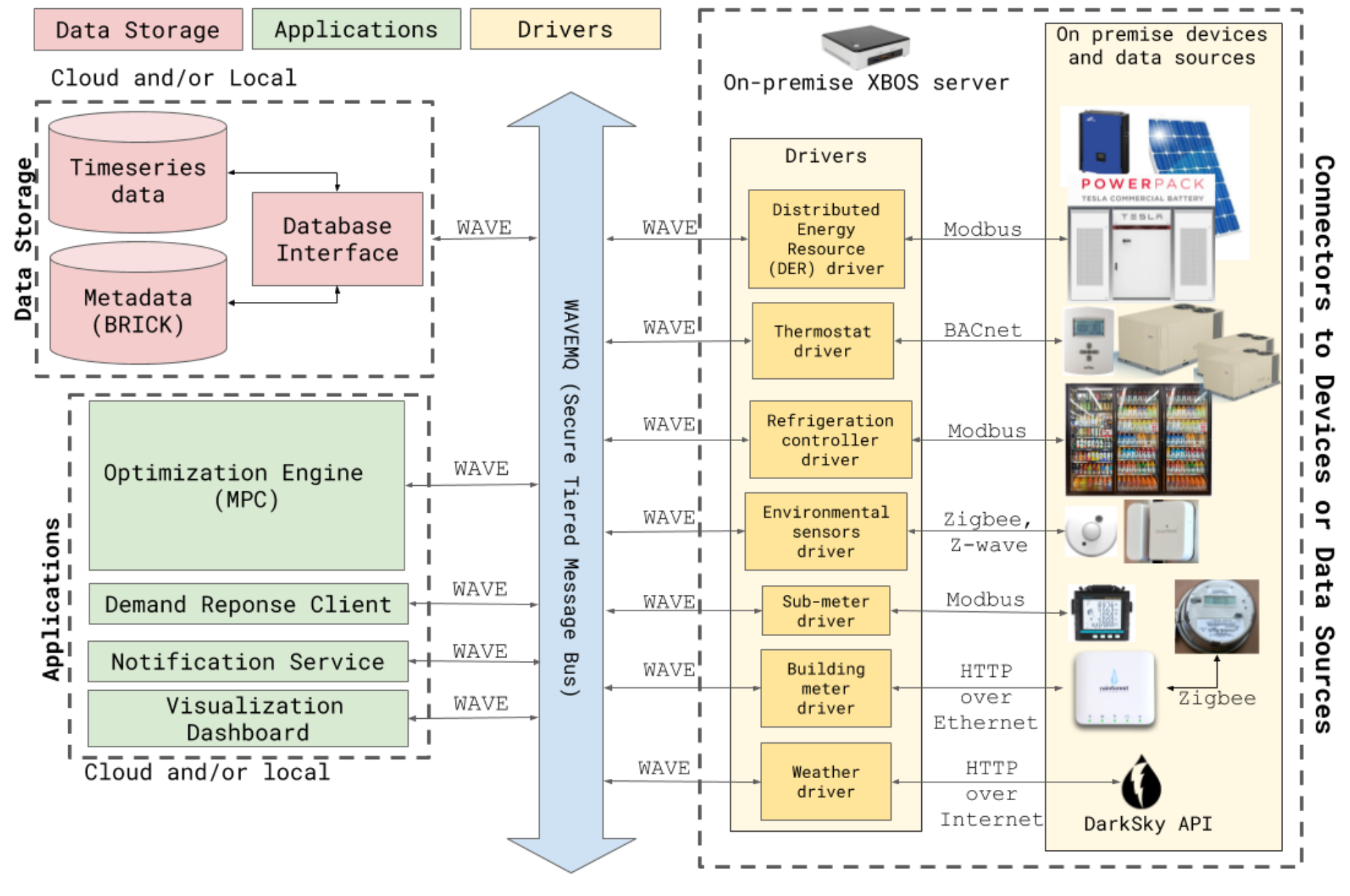
XBOS (eXtensible Building Operating System) is an open-source large-scale distributed operating system for smart buildings. XBOS provides secure real-time monitoring and control capabilities over diverse hardware (including BMS, smart meters, EV chargers and IoT devices). XBOS utilizes Brick to enable the development of portable control applications
Papers: Tech Report 2015 | TOSN 2018 | USENIX Security 2019 | SmartGridComm 2020